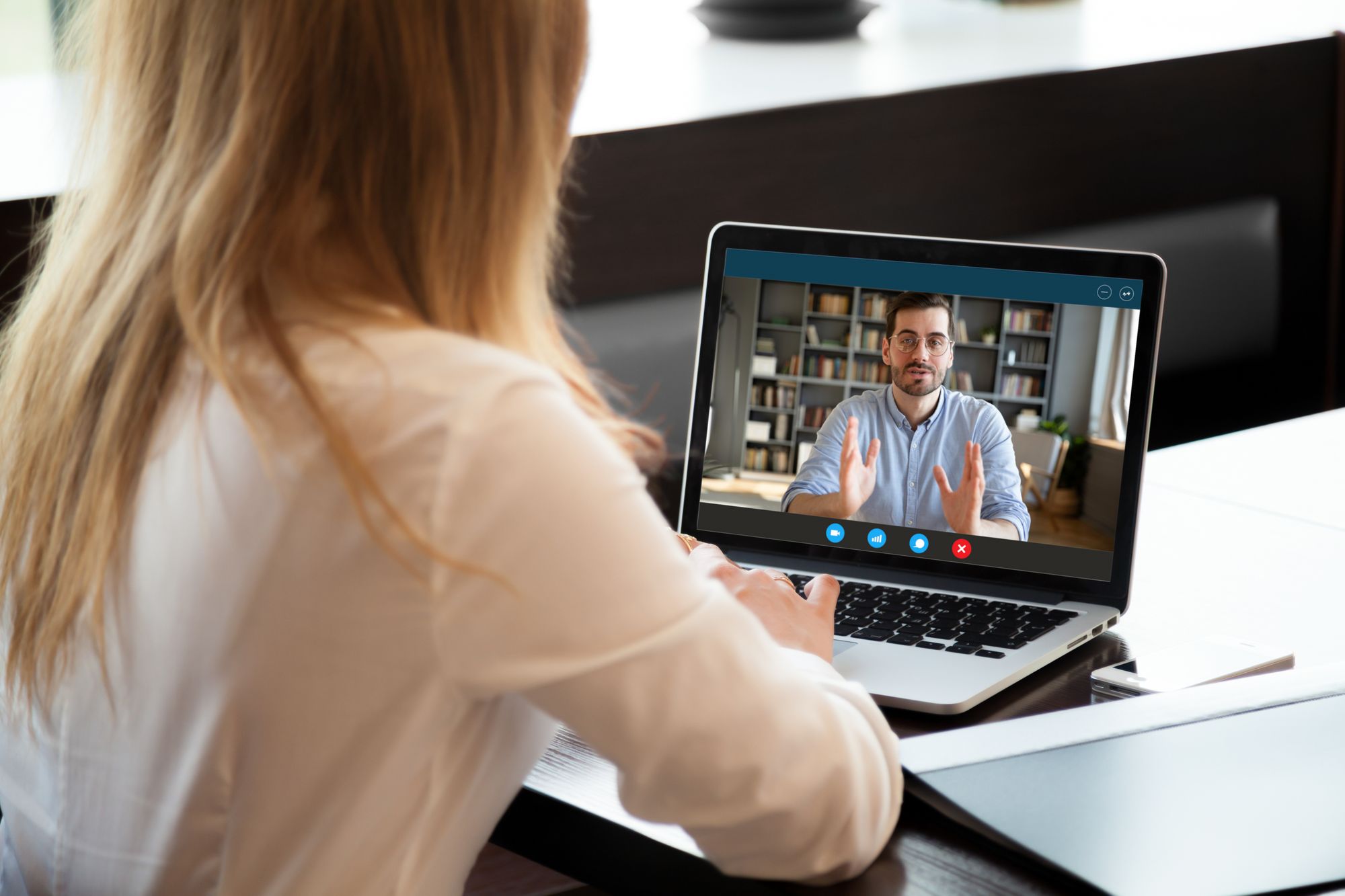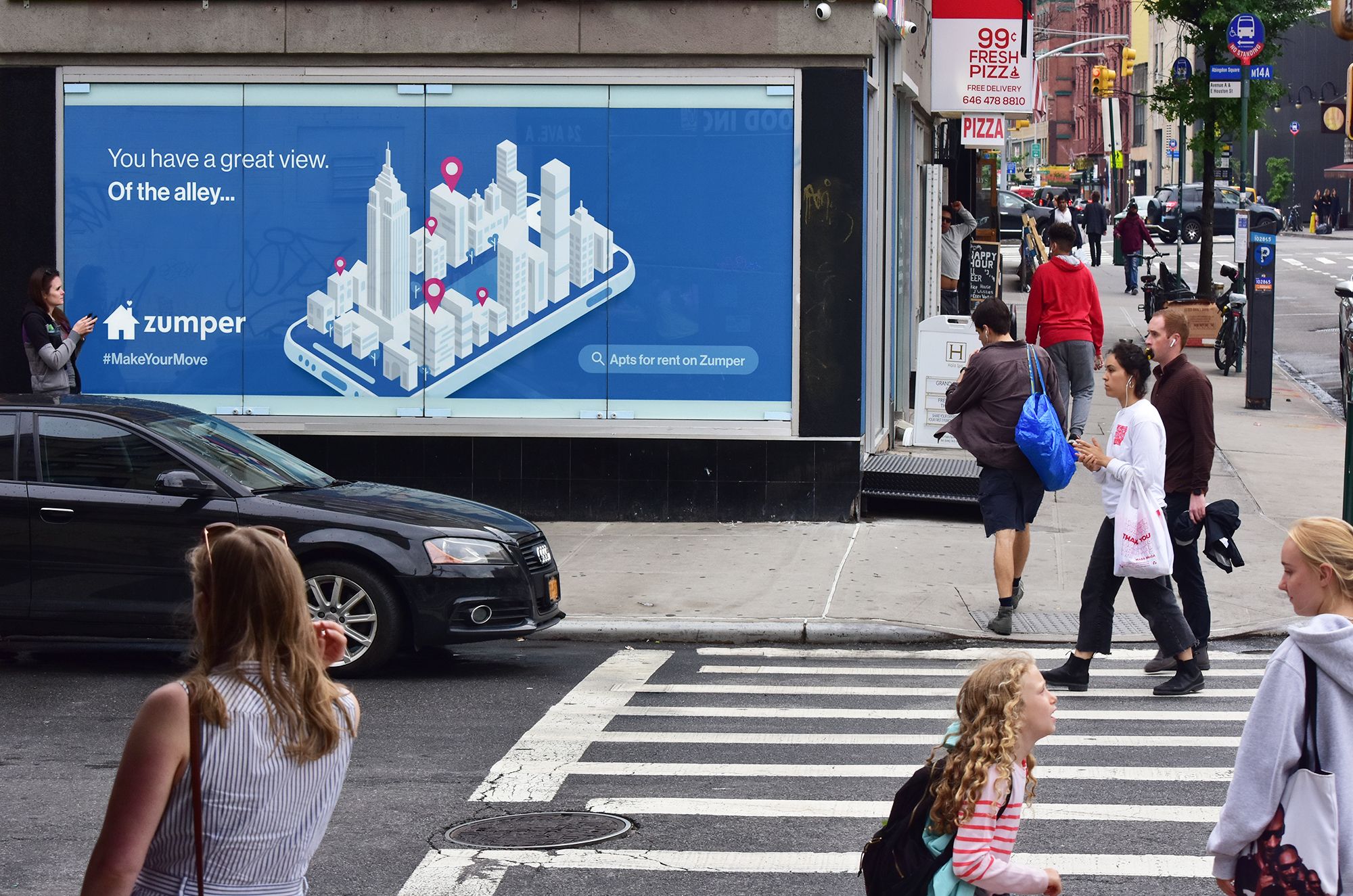How to Do Creative Research for Out of Home Media
Marketing is all about people — that’s what makes the advertising industry so fun. The process of building and launching any media campaign relies on so many different parts of our brain, from planning and ideating to developing, launching, and measuring the results of campaigns.

Marketing is all about people — that’s what makes the advertising industry so fun.
The process of building and launching any media campaign relies on so many different parts of our brain, from planning and ideating to developing, launching, and measuring the results of campaigns.
We are lucky, in this industry, to be doing true creative work with our skills. But one of the challenges that we often run into is putting structure into our processes.
How do we make sure that we’re showing people the right message?
What types of visuals are likely to make an impact?
The best way to navigate these challenging questions is through a well-defined creative process.
Here are five short, productive, exercises that you — or anyone on your team — can complete to ensure that you’re making the best judgment calls with your ads.
Bonus: If your team is working remotely, these exercises are a great way to build a deeper sense of connection, collaboration, and camaraderie across screens.
They’re also a way to stay productive, in a relaxing way, if your roles and responsibilities have changed.
Define Your Core Idea
What exactly is the definition of creativity?
According to one study published in the Harvard Business Review, marketers are likely to get this question wrong.
“Because product and brand managers—and the agencies pitching to them—have lacked a systematic way to assess the effectiveness of their ads, creative advertising has been a crapshoot,” writes Werner Reinartz and Peter Saffert, professors of marketing at the University of Cologne.
Reinartz and Saffert identified five dimensions of creativity, based on their individual impact to overall sales.
The most influential dimension, the duo found, was elaboration — unexpected details around simple ideas.
Another word to describe elaboration is “storytelling.”
Following elaboration were the following:
- Artistic value - appealing, memorable aesthetics
- Originality - components that are rare and surprising
- Synthesis - blending or connecting unrelated objects or ideas
- Flexibility - linking a product to a range of different uses or ideas
The creative process begins with a base, which is your core idea. One way to identify this starting point is to ask your team the question, “what is the value proposition that we want to communicate?”
Another way to frame this question is, "how does our product change peoples’ lives?"
Write down a few sentences to clearly explain what you have to offer.
From this foundation, you’ll be able to brainstorm layers related to artistic value, originality, synthesis, and flexibility.
Interview Some Customers

Customer interviews are valuable pathways to learn what’s on your audience’s mind. The goal, with these conversations, is to ask open-ended question that encourage your interviewee to tell interesting stories.
You’ll want to ask questions like, “tell me about a time that you read an interesting article or saw an interesting video — what was memorable?”
Other questions include:
- What has been the impact of product X on your life?
- Tell me about a time that you were really happy — what was your day like?
- What is your favorite TV show and why?
- How do you like to learn about new products?
Unlike straightforward yes/no questions, these customer interviews open doors for creative ideation.
As a researcher, the data that you’re collecting is the story.
You can then analyze this information to identify potential messaging or visualization ideas.
Here’s a simple process, adapted from this guide for User Interviews, that you can follow:
- Create an interview list
- Reach out to each person
- Ask to schedule a 30-45 minute conversation; mention that you’ll be recording the conversation
- Offer up a gift card or something else of value, to thank that person for their time (idea: donate to a nonprofit or philanthropic cause on that person’s behalf)
- Conduct the interview using a conferencing platform like Zoom
- Record the conversation so that you don’t need to take notes
- Create a transcription of the conversation
- Read through that transcription, taking notes and highlighting ideas where relevant
- Use the words and concepts that you identify to form the basis of your advertising campaign
By conducting several interviews, you’ll start to see nuances and patterns that can inform the direction of your campaign.
With the data that you generate, you’ll have a deeper idea of your audience’s decision cycles, which you can translate into creative concepts.
Examine Geographic Trends
Every neighborhood is its own cultural hub, with a unique personality.
That’s why geotargeting is known to be one of the most valuable techniques in advertising.
People in neighborhoods tend to share values, personality traits, goals, and demographic characteristics.
Census data can be particularly eye-opening with regards to the types of messaging that audiences will find interesting and valuable.

“We placed billboards in regions that we thought aligned with patterns in other markets,” says Dan Laufer, head of growth marketing at NextDoor, in an interview with AdQuick. “Drive time was our major consideration, with the expectation that we could reach people on a consistent basis in their neighborhoods.”
Within AdQuick, you can explore a range of geographies from different perspectives. Using the platform, you can see what ad units look like on the ground, as well as the demographic variables that define that particular region. This information will have value beyond out of home, in other channels.
“Thanks to AdQuick, we are able to specifically target regions that have high populations of low-propensity voters,” says Debra Cleaver, CEO at Long Distance Voter and former CEO at Vote.org, in an interview. “We are able to reach people who aren’t being targeted by partisan groups — or that partisan groups are neglecting. We’re putting billboards in the exact areas where the people we need to reach, predominantly poor people, are congregating.”
Demographic data, combined with your other sources of research, can help you architect a more thoughtful, on-point campaign.
Create a Mood Board
Once you have some foundational ideas, how do you connect the dots?
You may not be ready to architect your campaign just yet.
At this stage, you and your team will likely want to do some more brainstorming. That’s where a mood board enters the picture.
If you’ve ever enjoyed making collages, then you’ll love this exercise. Use a tool like PowerPoint or Canva, and start creating a mashup of images and concepts that you find inspiring. These can be example ads, slogans, patterns, photographs, or any other elements that you find interesting.
The goal of your mood board is for you to start to visualize your ideas — to translate them from abstract to tangible form. It’s a way to move your thoughts forward, as a stepping stone to your final concept.
For a guide to creating a mood board, check out this resource from Canva. You’ll see interesting samples, templates, and best practices (i.e. how to match concepts with brand elements).
Start Testing Ideas
Once you have some storytelling concepts, visual elements, and messaging components defined, you can start putting your ideas to the test in a small-scale way.
Use a basic design tool (or work with a designer) to mock up a few campaigns.
Each one should focus on a unique concept with regards to ad copy and visuals.
From there, you can launch some small-scale paid ads online to see what performs well and what doesn’t.
With this minimal, upfront spend you can avoid pouring resources into a campaign that misses the mark, entirely.
If you’re looking for a structured process, check out this 2014 Lean Startup Conference Talk, in which an entrepreneur shares how she tested her way to the right packaging for her product.
The same techniques apply to out of home.
Final Thoughts
Give your mind room to wander and roam.
Creative ideation is better when it’s fun.
You can even invite your colleagues to join you, with each person participating in the activities that they find most personally fulfilling, to them.
Every campaign has a story behind the scenes.
Make yours a good one!
Contributors Statement
This blog post was a collaboration between the AdQuick team. Chris Gadek, John McClung, and Jack Gaylor contributed to this piece. Payton Biddington created the visuals.If you'd like to learn how out of home can work with your unique marketing campaign and business, send a quick email to [email protected] or call (213) 986-6179. We'll reach out with case studies and recommendations tailored to you.
Disclosure
The opinions expressed are those of the authors. This material has been prepared for educational purposes only. Please be sure to consult with your internal team of stakeholders to assess your specific needs before adapting any practices from this blog, as your own.

